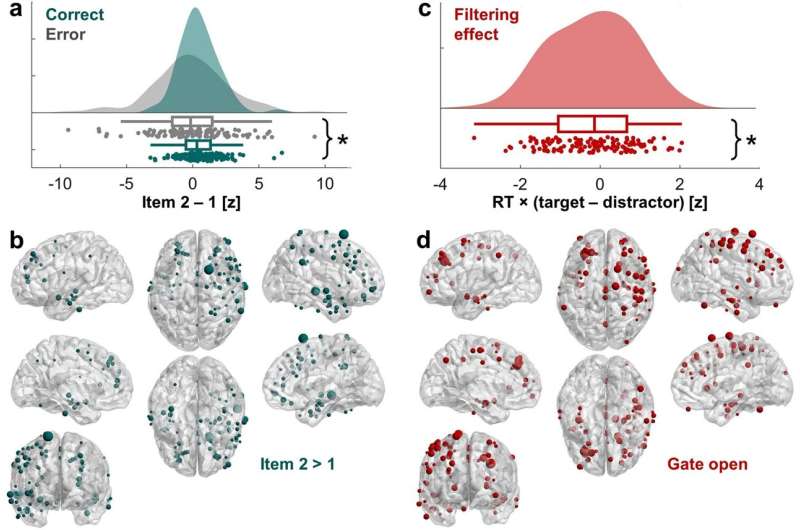This article has been reviewed according to Science X's editorial process and policies. Editors have highlighted the following attributes while ensuring the content's credibility:
fact-checked
peer-reviewed publication
trusted source
proofread
Study establishes fluctuating 'gating' mechanisms supporting flexible brain behavior

A recent Northwestern Medicine study has demonstrated how neocortical brain networks fluctuate in synchrony to support neural mechanisms that allow information to enter working memory and change goals on the fly.
The ability to change behavior quickly, or flexible behavior, depends on previously identified "gating" mechanisms, which open a metaphorical "gate" that lets relevant information in and then closes, keeping irrelevant information out.
The current findings, published in Nature Communications, improve the understanding of how humans can think flexibly.
"They explain how our brains allow us to focus on relevant information and continue to keep that focus, even as what is relevant changes from moment to moment," said Elizabeth Johnson, Ph.D., assistant professor of Medical Social Sciences and of Pediatrics and lead author of the study.
Specifically, Johnson and her team studied neurosurgery patients undergoing intracranial electroencephalography (EEG) monitoring as part of their treatment regimen for drug-resistant epilepsy.
"This technique measures the human brain's electrical activity with unparalleled spatiotemporal precision," Johnson said.
During EEG monitoring, patients were asked to perform a working memory task adapted from previous research.
Using these methods, Johnson's team discovered rapid changes in the synchrony of theta brain waves—which support the regulation of memory and behavior—in the patients' neocortical brain networks.
Their findings establish this gating mechanism as an enabler of flexible behavior, a role that was previously attributed to the brain's striatum, according to Johnson.
"In addition to revealing a neocortical gating mechanism, our results help us understand how human behavior emerges from interactions across brain networks," Johnson said.
More information: Elizabeth L. Johnson et al, A rapid theta network mechanism for flexible information encoding, Nature Communications (2023). DOI: 10.1038/s41467-023-38574-7


















